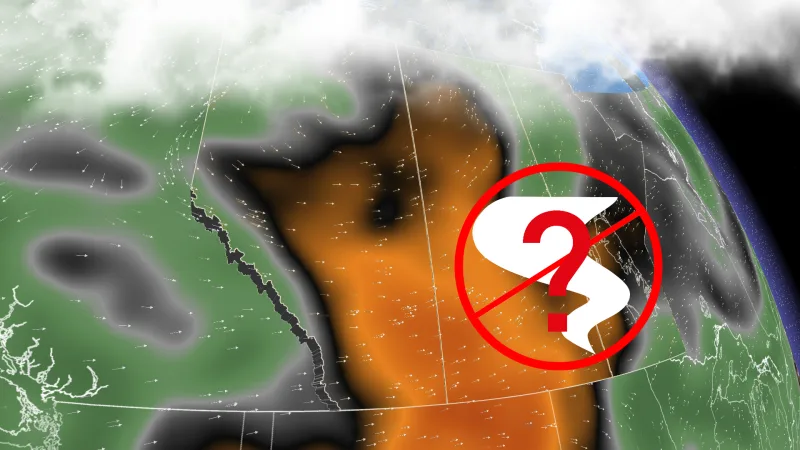
Western Canada saw no tornadoes in July, first time since 1959
A combination of dry conditions and persistent wildfire smoke worked against tornado formation last month.
Ordinarily, the Prairie provinces outstrip all the rest of Canada in terms of annual tornado counts, but something peculiar, and very rare, has happened this year.
Simply: The region went the entire month of July without notching so much as a single EF-0. Not one confirmed twister during what statistically is the most tornado-prone summer month. According to the Western University-based Northern Tornado Project, this is the first time this has happened since 1959.
The eastern half of the country, by contrast, saw 16 tornadoes confirmed in July, with 13 in Ontario, around the province's entire annual average.
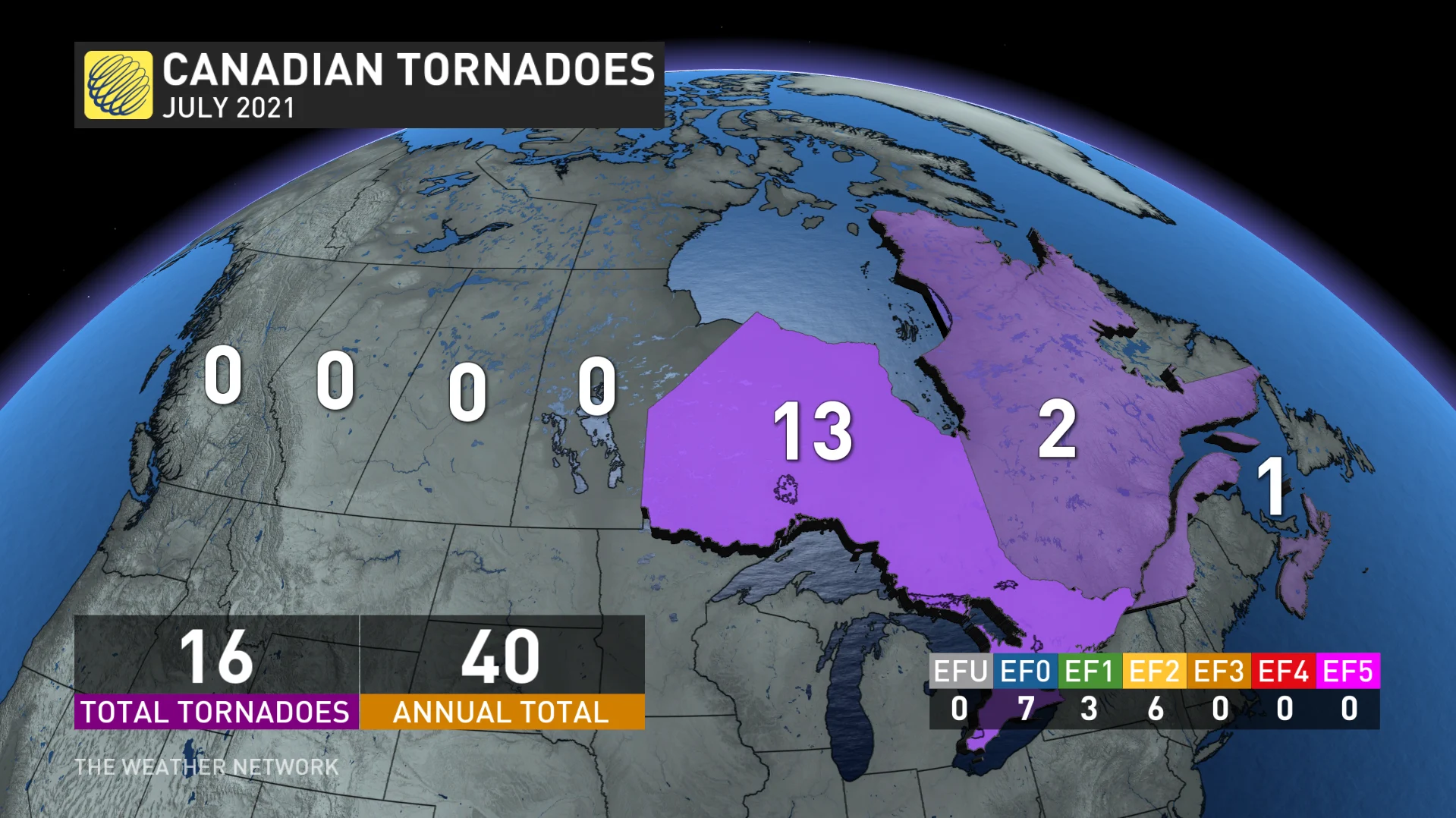
We say that with the usual caveat, which is that we are talking about confirmed tornadoes, where a team of meteorologists has been to the site of a suspected tornado and determined whether the damage is tornado-related, and then calculated its estimated strength.
The Prairie region is vast and less populous than southern Ontario, so it's always possible that a tornado occurred in one place or another, and went unreported simply because no one was around to see it.
But there's evidence July's lack of confirmed twisters is no mere undercount, and the tornado drought is related to the very literal drought gripping the region.
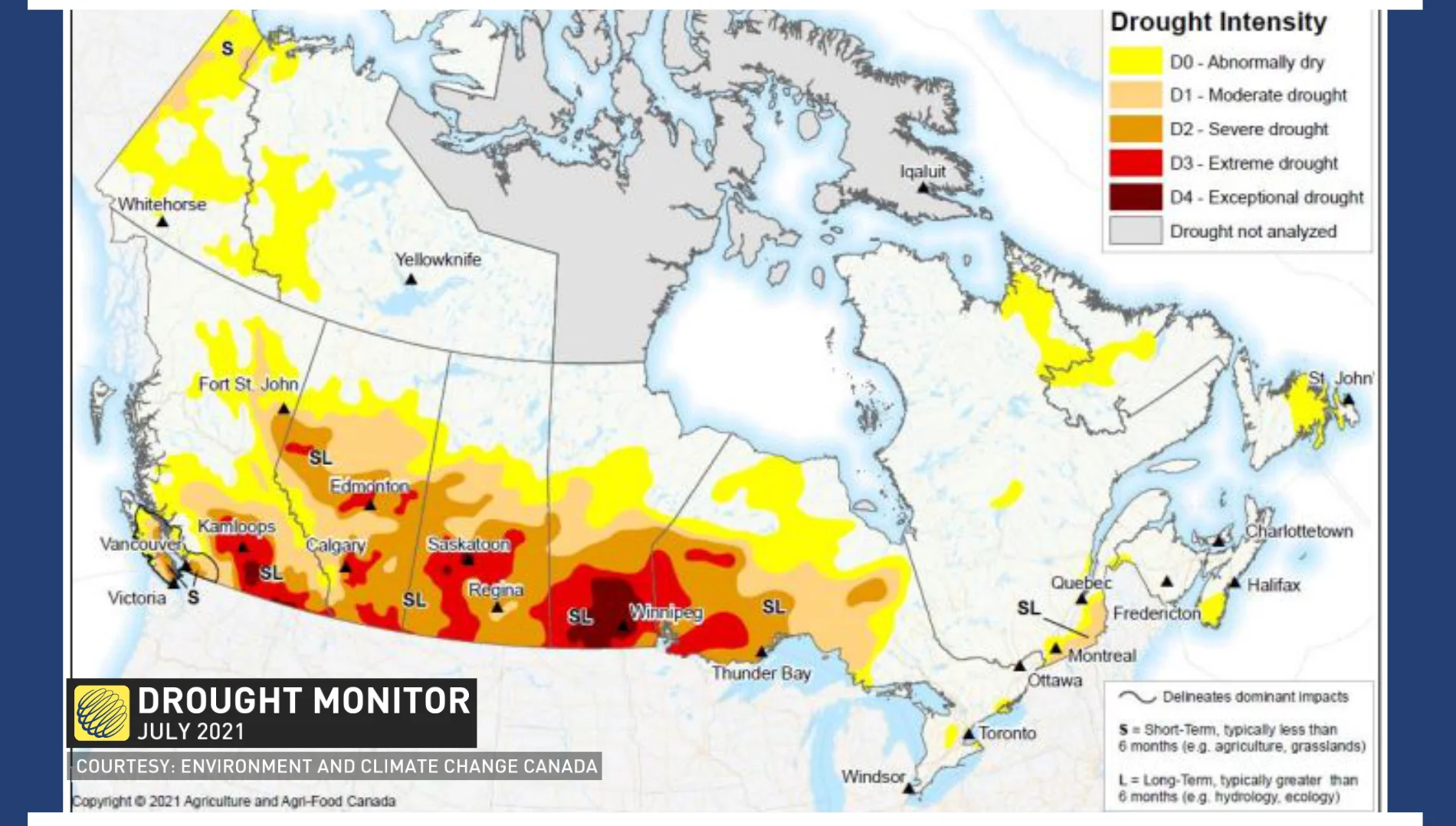
Western Canada has been very dry for months, with well-below seasonal moisture for most places.
In July at least, the culprit has been persistent high pressure over the region, which diverts moisture-laden systems up and over it. That drastically reduces the amount of moisture near the surface, robbing the area of a key ingredient in thunderstorm formation, the genesis of most tornadoes.
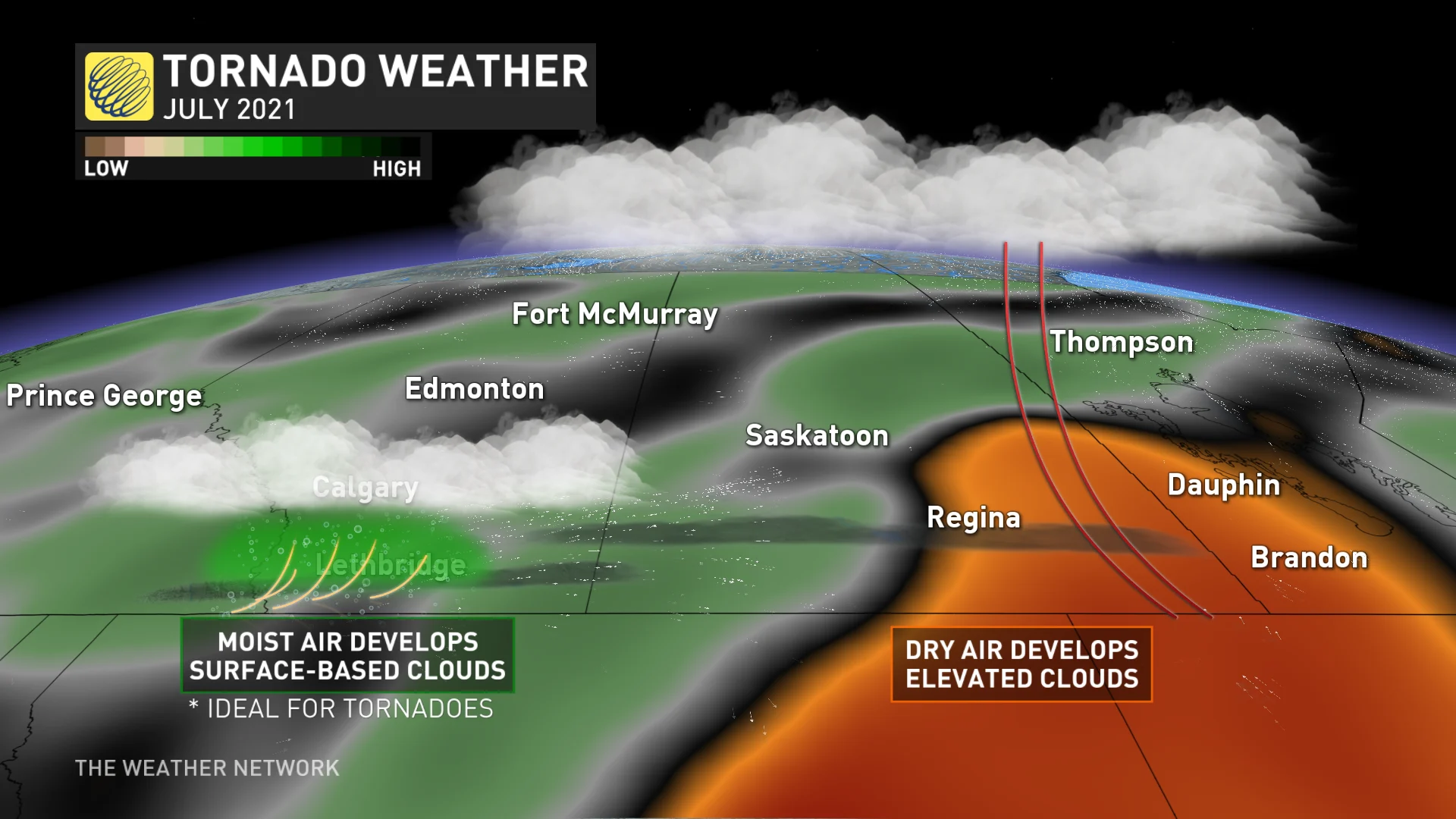
There's also one more factor that may have contributed to this tornado drought: Western Canada's prodigious wildfire situation, which has seen wildfire smoke spread across the region and beyond.
Aside from degrading air quality, the smoke has also blocked some of the sun's light. Aside from making for dim skies and red sunsets, it also limits daytime heating, another factor in nudging thunderstorms across the severe threshold, and making them more likely to produce tornadoes.
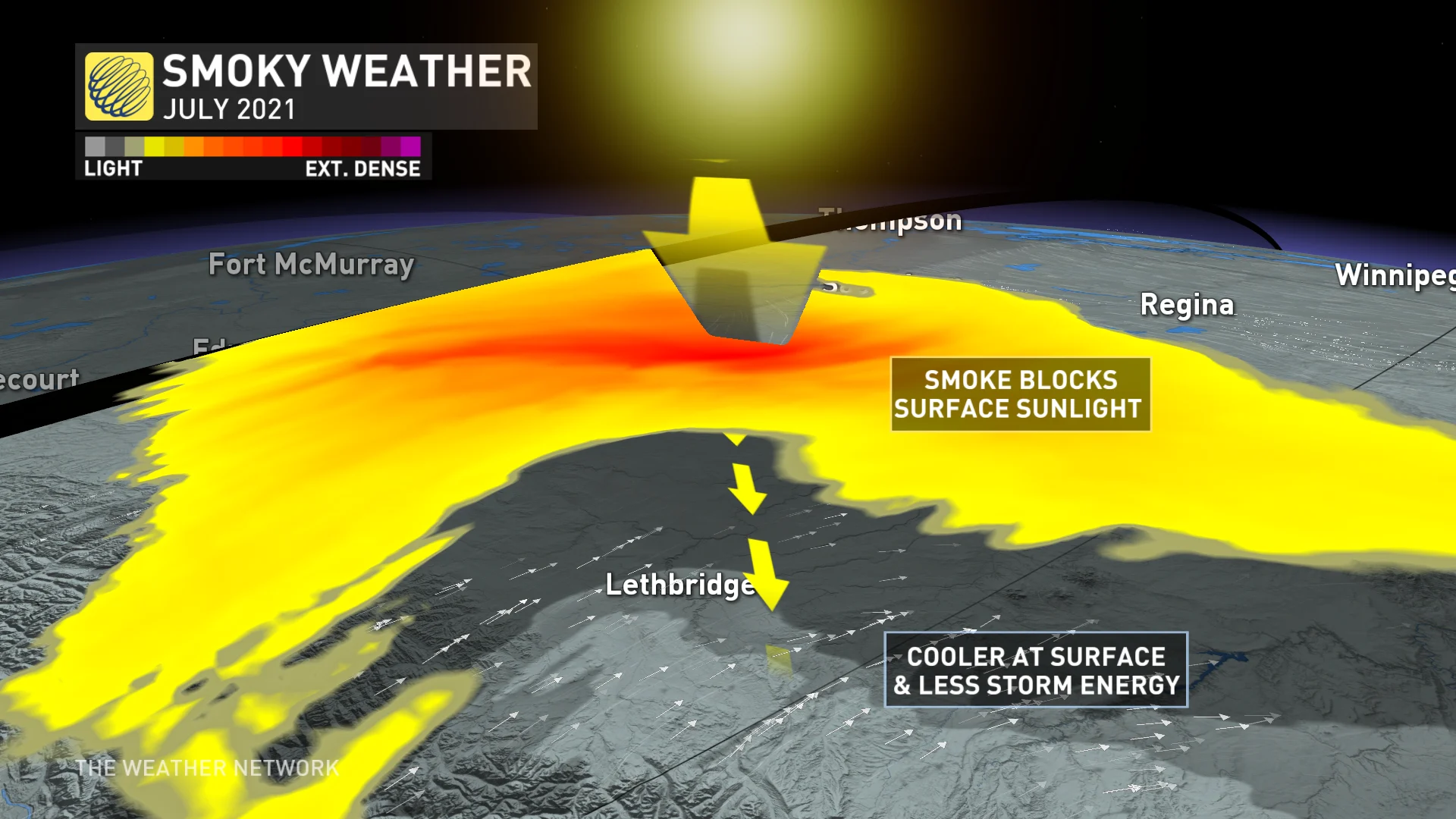
Though July is the peak of tornado season, that month's tornado drought shouldn't be seen as a guarantee the rest of the summer will be twister-free. As always, keep an eye on the forecast and be mindful of severe weather alerts.
